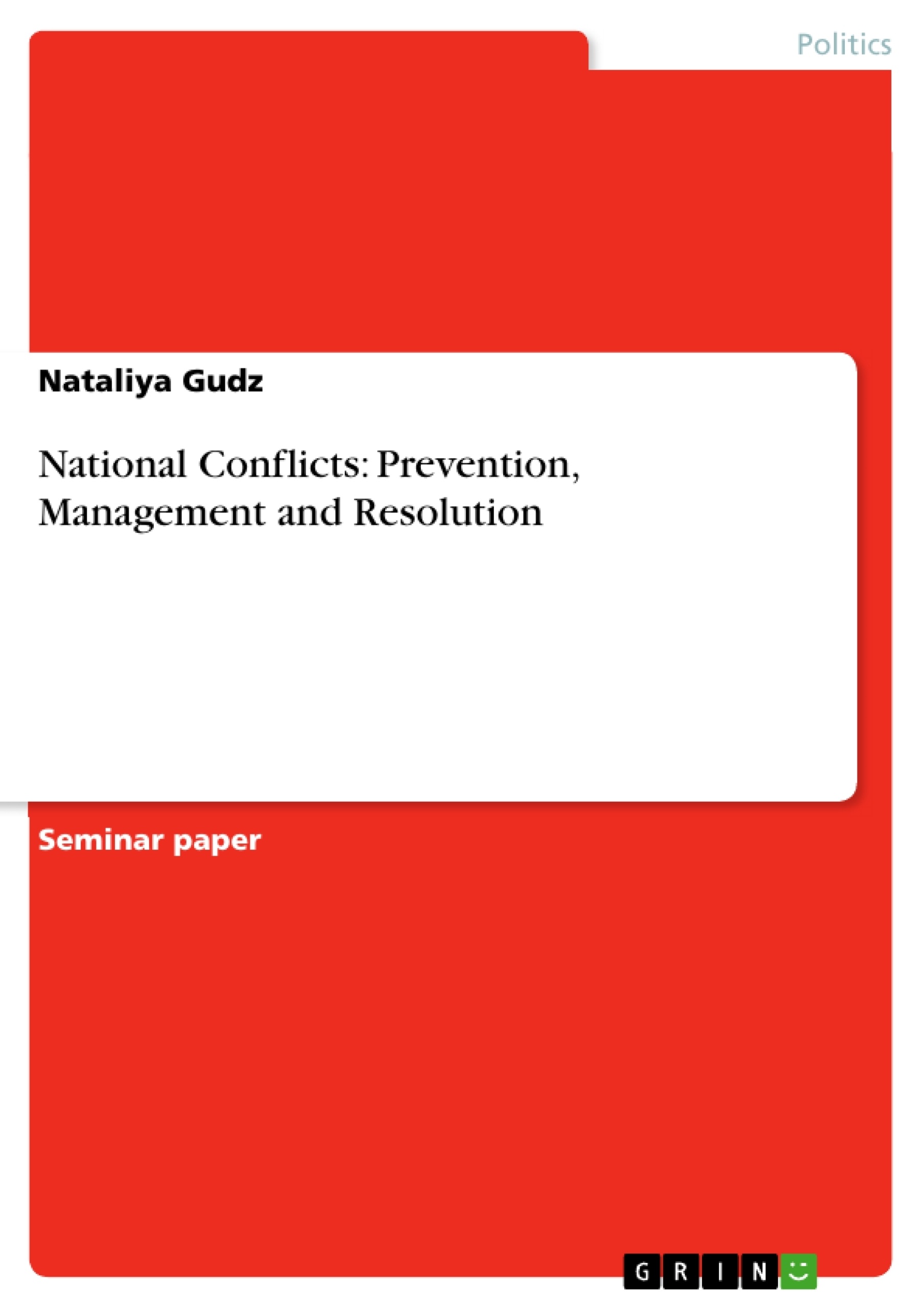The post-Cold War change in political priorities brings with itself incompatibilities. Market competition and free trade have increased prosperity for some nations and groups but left others behind. Peace and human rights do not always go hand in hand. Democratisation and increased popular participation in government can lead to minority rights abuses. Economic development and democratisation cannot always be achieved simultaneously; in the long run, these values may be reconcilable, but in the short run, they can generate tensions. Conflicts around the world have not declined, despite the end of the Cold War. From 1989 through 1993, a total of 90 large and small-armed conflicts occurred. At any given time, the number of violent conflicts fluctuates around 50 each year. That′s why in the post cold-war era, it has become more important than ever that the three actors in conflict prevention and resolution - governments, non-governmental organisations (NGOs) and intergovernmental organisations - went hand in hand. The crucial lesson learned from the previous peace processes had been that there could be no peace without the participation and the will of the parties and the populations involved, for which participation of civil society was fundamental.
Table of Contents
- Conflict: issues and types, reasons and causes
- Conflict issues
- Conflict types
- Reasons of national conflicts broken out after the Cold War
- Socio-economic and political causes of national conflicts
- Procedures for resolving national conflicts
- Negotiations
- Mediation
- Adjudication and arbitration
- Organisations for resolving national conflicts: peace by piece
- Conclusions
Objectives and Key Themes
This term paper explores the causes, types, and prevention of national conflicts, particularly in the post-Cold War era. It analyzes the challenges of managing and resolving these conflicts, highlighting the role of various actors, including governments, NGOs, and intergovernmental organizations.
- The nature and dynamics of national conflicts
- The impact of post-Cold War political changes on conflict dynamics
- The role of various actors in conflict prevention, management, and resolution
- Different approaches to conflict resolution, including negotiations, mediation, and adjudication
- The importance of civil society participation in conflict resolution processes
Chapter Summaries
- Chapter 1: Conflict: issues and types, reasons and causes This chapter provides a comprehensive overview of national conflicts, focusing on their various types, including territorial conflicts, conflicts over government composition, and national honor conflicts. It also explores the key reasons for the escalation of national conflicts after the Cold War, examining both socio-economic and political factors.
- Chapter 2: Procedures for resolving national conflicts This chapter delves into the methods employed in the resolution of national conflicts. It examines the key procedures, including negotiations, mediation, adjudication, and arbitration, highlighting their strengths and limitations in different contexts.
- Chapter 3: Organisations for resolving national conflicts: peace by piece This chapter focuses on the various organizations involved in promoting peace and resolving conflicts. It explores their roles, strategies, and contributions to conflict management and resolution.
Keywords
This term paper focuses on key concepts related to national conflicts, including conflict types, causes, prevention, management, and resolution. It also explores the role of various actors, such as governments, NGOs, and intergovernmental organizations, in addressing these challenges. Key terms and themes include: national conflicts, conflict resolution, post-Cold War era, conflict prevention, conflict management, mediation, negotiations, adjudication, arbitration, civil society participation, peacebuilding.
- Quote paper
- Nataliya Gudz (Author), 2004, National Conflicts: Prevention, Management and Resolution, Munich, GRIN Verlag, https://www.grin.com/document/32692




